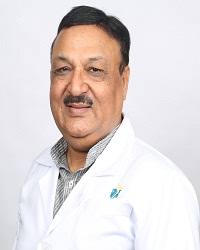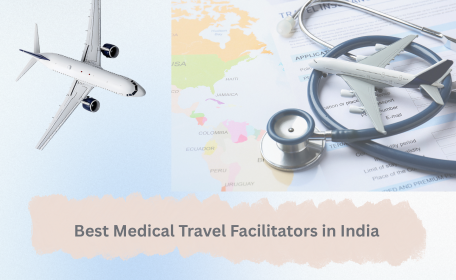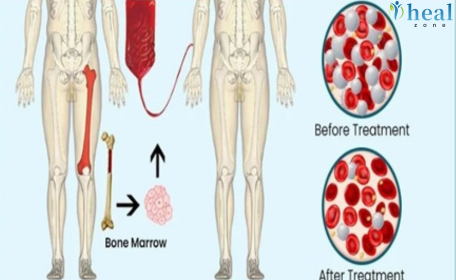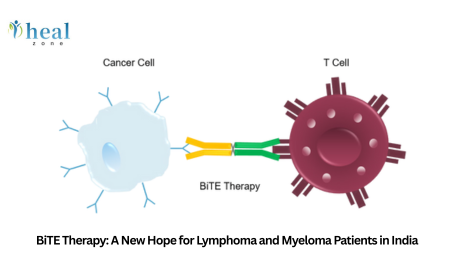What is a brief overview of spinal decompression and fixation with cost in India?
Spinal decompression and fixation is a life-improving surgery performed to relieve nerve compression, spinal instability, or deformity. It involves removing pressure from spinal nerves and stabilizing the spine using implants such as rods, screws, and cages. In India, this procedure is performed with advanced technology at a much more affordable cost compared to Western countries. The average cost ranges from $4,500 to $7,500 depending on the complexity of the case, implant type, and hospital tier.
What is spinal decompression and fixation?
Spinal decompression and fixation is a combined surgical approach used to treat conditions that cause pressure on the spinal cord or nerves, alongside spinal instability. It has two primary components:
1. Decompression: Removal of bone or soft tissue compressing the spinal cord or nerves (e.g., herniated disc, bone spur, ligament thickening).
2. Fixation: Stabilization of the affected spine segment using metallic implants such as pedicle screws, rods, cages, and interbody fusion devices to hold the vertebrae in place.
The goal is to alleviate pain, restore mobility, and prevent further neurological damage.
Who needs spinal decompression and fixation surgery?
This surgery is recommended for patients suffering from chronic spinal conditions that don't respond to non-surgical treatment. Common indications include:
- Spinal stenosis (narrowing of the spinal canal)
- Herniated or bulging discs
- Spondylolisthesis (vertebra slippage)
- Spinal fractures or trauma
- Degenerative disc disease
- Tumors or infections affecting the spine
- Failed previous spinal surgery
Patients typically experience symptoms like persistent back or neck pain, numbness, muscle weakness, difficulty walking, or loss of bladder/bowel control in severe cases.
What are the different types and methods used in spinal fixation?
Spinal fixation can vary based on the condition, location of the problem (cervical, thoracic, or lumbar spine), and surgical technique. Major types and methods include:
Types of Fixation Devices:
- Pedicle Screw-Rod System: Most common method for lumbar and thoracic spine.
- Interbody Fusion Cages: Placed between vertebrae to maintain disc height and promote fusion.
- Plates and Screws: Often used in cervical spine fixation.
- Expandable Spacers and Artificial Discs: In select minimally invasive cases.
Surgical Methods:
- Open Spine Surgery: Traditional method for direct access and thorough decompression.
- Minimally Invasive Spine Surgery (MISS): Uses smaller incisions, less blood loss, and faster recovery.
- Endoscopic Spine Surgery: Involves inserting a tiny camera through a small incision; used for specific disc-related issues.
The type and approach are determined after detailed imaging and clinical evaluation.
What is the step-by-step treatment protocol for spinal decompression and fixation?
The treatment journey for international patients undergoing spinal decompression and fixation in India includes these key steps:
1. Pre-Arrival Evaluation:
- Virtual consultation with spine specialists
- Submission of MRI, CT scans, and history for pre-assessment
2. Admission & Preoperative Workup:
- Blood tests, ECG, chest X-ray, COVID test
- Anesthesia fitness assessment
- In-person consultation and informed consent
3. Surgical Procedure:
- Performed under general anesthesia
- Decompression of neural elements using laminectomy/discectomy
- Stabilization using screws, rods, cages, or plates
- Procedure duration: 3 to 6 hours depending on complexity
4. Immediate Post-Surgery Care:
- Pain control and neuro-monitoring in recovery unit
- Mobilization typically starts within 24–48 hours
- Antibiotics and wound management
5. Discharge and Rehabilitation:
- Hospital stay: usually 4–7 days
- Rehab plan provided with exercises and posture training
- Virtual follow-ups with the surgeon after discharge
This comprehensive protocol ensures safety, precision, and a smoother recovery for international patients.
What types of implants and devices are used in spinal fixation?
Spinal fixation requires the use of specialized implants designed to stabilize the spine and encourage bone fusion after decompression. The choice of implants depends on the segment of the spine being treated (cervical, thoracic, or lumbar) and the severity of the condition.
Commonly Used Implants and Devices:
- Pedicle Screws and Rods: Provide rigid support for the vertebrae; standard in lumbar and thoracic surgeries.
- Interbody Fusion Cages: Inserted between vertebrae to restore disc height and promote fusion.
- Plates and Screws: Used primarily in cervical spine surgeries.
- Expandable Spacers: Adjust in height once inside the body, minimizing bone cutting.
- Artificial Discs: Used in motion-preserving procedures, particularly for cervical disc replacement.
- Bone Grafts or Substitutes: Promote natural bone fusion over time.
All implants used in India for international patients are FDA- or CE-certified, ensuring global safety and performance standards.
What is the total cost breakdown for international patients in India?
India offers transparent and highly affordable spine surgery pricing for international patients. Here is a typical cost breakdown:
|
Treatment Component |
Estimated Cost (USD) |
|
Initial Consultation & Physical Exam |
$100 – $200 |
|
Diagnostic Imaging (MRI, CT, X-ray) |
$250 – $500 |
|
Preoperative Lab Tests |
$100 – $200 |
|
Anesthesia & Operating Room Charges |
$800 – $1,200 |
|
Implant Devices (Rods, Screws, Cages) |
$1,500 – $2,500 |
|
Surgeon’s Fee |
$800 – $1,200 |
|
Hospital Stay (4–7 days, Private Room) |
$500 – $800 |
|
Medications and Consumables |
$200 – $400 |
|
Physiotherapy & Rehabilitation |
$200 – $400 |
|
Post-Surgical Follow-Up (Telemedicine) |
Included or $50 – $100 |
Total Estimated Cost in India: $4,500 to $7,500
This is all-inclusive, covering diagnostics, surgery, hospital stay, implants, and post-op rehab.
Why do international patients prefer India for spine surgeries?
India is now one of the top destinations globally for spine care, including spinal decompression and fixation surgeries. Here's why international patients trust India:
Affordability Without Compromise:
- High-quality treatment at a fraction of Western prices.
Expertise of Spine Surgeons:
- Many are trained in the US, UK, or Europe, with high surgical volumes.
Global-Standard Hospitals:
- JCI- and NABH-accredited facilities with modern diagnostics and ORs.
Multilingual Support & Cultural Compatibility:
- English-speaking staff and care teams trained for global patients.
Shorter Waiting Periods:
- Surgeries scheduled quickly, reducing disease progression and cost.
With thousands of satisfied international patients every year, India is a proven destination for complex spinal surgeries with excellent results.
Why choose Healzone as your medical tourism facilitator in India?
Healzone offers personalized medical travel services for patients seeking safe, affordable, and high-quality spine treatment in India. Here’s why it’s the preferred choice:
All-Inclusive Support System:
- From visa processing to airport pickup and drop-off
Partner Network of Accredited Hospitals:
- Access to top-tier orthopedic and neurosurgical centers across India
Dedicated Case Managers:
- Assigned to assist with appointment booking, travel coordination, and rehab planning
Transparent Pricing & No Hidden Charges:
- Fixed treatment packages shared before your trip begins
Virtual Post-Operative Care:
- Follow-up with your surgeon even after returning home
Healzone ensures your treatment journey is clinically successful and logistically effortless, making it ideal for international patients traveling to India for spinal decompression and fixation.
What are the surgical techniques and anesthesia options used?
Spinal decompression and fixation procedures in India are performed using advanced surgical techniques, tailored to each patient’s diagnosis and spinal segment involved. The goal is to relieve pressure on nerves and stabilize the spine with minimal trauma.
Surgical Techniques:
- Open Spine Surgery: Traditional approach with full exposure of the spine. Used in complex or multi-level decompression cases.
- Minimally Invasive Spine Surgery (MISS): Involves smaller incisions, less muscle damage, quicker recovery, and reduced hospital stay.
- Endoscopic Spine Surgery: In select cases, a tiny camera and tools are inserted through a small incision for decompression.
- Navigation or Robotic-Assisted Surgery: Used in advanced centers for precision implant placement.
Anesthesia Options:
- General Anesthesia: Commonly used; the patient is fully unconscious during the procedure.
- Spinal or Epidural Anesthesia: Occasionally used for lower spine procedures with sedation.
- Intraoperative Neuromonitoring (IONM): Applied during surgery to track nerve function and enhance surgical safety.
India’s top centers are equipped with cutting-edge surgical tools and experienced anesthesiologists, ensuring high success and low complication rates.
What is the recovery and rehabilitation process after spine surgery?
Recovery after spinal decompression and fixation is a structured and phased process. The goal is to ensure a safe return to daily activity, prevent complications, and support spinal fusion if bone grafts are used.
Hospital Phase (Days 1–5):
- Patient is monitored for pain control, wound healing, and neurological stability.
- Physiotherapy begins within 24–48 hours.
- Sitting up and walking (with support) usually starts by day 2 or 3.
Early Recovery (Weeks 1–6):
- Discharged with medications, wound care instructions, and mobility aids.
- Light walking and supervised exercises encouraged.
- Avoid bending, lifting, and twisting.
Intermediate Recovery (Weeks 6–12):
- Increase physical activity.
- Begin outpatient or home physiotherapy to strengthen back muscles.
- Gradual return to work if sedentary.
Long-Term Recovery (3–6 months):
- Return to full physical function (except heavy labor).
- Fusion is usually complete within 6–12 months.
With disciplined rehab, most patients regain pain-free mobility and experience significant quality-of-life improvements.
What are the risks and how are complications managed?
Although spinal surgery is generally safe, there are potential risks. However, in India, these risks are well-managed with robust preoperative screening and surgical protocols.
Common Risks:
- Infection: Controlled with pre-op antibiotics and sterile OR environment.
- Bleeding: Usually minimal in MISS; controlled intraoperatively.
- Nerve Injury: Rare, but may occur if decompression is near delicate structures.
- Implant-related Issues: Loosening or hardware failure may need revision surgery.
Postoperative Complications:
- Nonunion (failed fusion): Managed by activity restriction and bone stimulators.
- Dural Tear: Usually repaired during surgery; may cause a headache or fluid leakage.
- Chronic Pain or Scar Tissue Formation: Treated with medications or nerve block therapies.
Indian centers follow international surgical protocols and have critical care teams available for post-op observation and complication management.
What is the long-term care and implant maintenance protocol?
Long-term outcomes of spinal decompression and fixation are excellent when patients follow the prescribed care plan.
Routine Follow-Ups:
- First in-person or virtual visit 4–6 weeks post-op.
- X-rays or CT scans to monitor spinal fusion and implant position.
- Follow-ups scheduled every 3–6 months for the first year.
Fusion Monitoring:
- If a bone graft is used, full spinal fusion may take 6–12 months.
- Supplements (calcium, vitamin D) may be prescribed to enhance bone healing.
Lifestyle Cautions:
- Avoid high-impact activities and excessive bending or twisting.
- Maintain healthy body weight to reduce stress on the spine.
- Smoking is strongly discouraged as it hinders fusion.
Most implants (screws, rods, cages) are biocompatible and long-lasting, requiring no removal unless complications arise.
How should international patients prepare before traveling to India?
Proper preparation is essential for a smooth and safe medical journey. International patients should follow a pre-travel checklist to ensure all logistical and medical aspects are covered.
Travel & Documentation Checklist:
- Obtain a Medical Visa (M-Visa) with the help of an invitation letter from Healzone.
- Carry passport, visa, return flight booking, and copies of medical records (MRI, X-ray, reports).
- Inform your local physician and collect a fitness-to-fly certificate, if required.
Health & Medication Prep:
- Pack all routine medications and a list of drug allergies.
- If using walking aids or braces, carry them along.
- Begin prehabilitation exercises if recommended by Healzone’s spine care advisor.
Accommodation & Arrival:
- Healzone will arrange hotel bookings and local travel support.
- Use a compression belt or brace for comfort during long-haul flights if necessary.
This structured approach reduces stress and ensures timely preoperative evaluations once you arrive.
What post-operative care is provided for international patients?
After spinal surgery, dedicated in-hospital and post-discharge care is essential for healing and safety, especially for overseas patients returning home soon after surgery.
In-Hospital Care:
- Daily visits by the spine surgeon and physiotherapy team.
- Strict infection control, pain management, and mobility training.
Post-Discharge Care:
- Instruction on wound care, medication, and home exercises.
- Digital file of reports, imaging, and post-op summary provided.
After You Return Home:
- Scheduled virtual consultations with your surgeon via video call.
- Ongoing physiotherapy guidance through Healzone’s partner clinics (if available in your country).
- Prescription refill support or documentation for insurance claims.
With this system, international patients enjoy continuous care even after returning home, ensuring smooth and safe recovery.
What lifestyle changes are needed after spine surgery?
To protect your spinal implants and ensure long-term recovery, patients are advised to make some adjustments in daily life.
Physical Activity:
- Light walking is encouraged within a few days after surgery.
- Avoid high-impact sports like running, jumping, or heavy lifting for at least 6 months.
- Practice correct posture during sitting, standing, and sleeping.
Healthy Living Habits:
- Maintain a healthy body weight to avoid pressure on the spine.
- Stop smoking and limit alcohol intake as they delay healing.
- Include a calcium-rich, anti-inflammatory diet (vegetables, omega-3s, whole grains).
These changes help improve bone healing, minimize complications, and support spinal fusion if bone grafts are used.
What medical tourism support services are provided in India?
Healzone offers complete medical travel services, making spine surgery in India accessible, affordable, and convenient for patients from around the world.
Included Services:
- Visa guidance with official invitation letters
- Airport pickup/drop-off with local transportation
- Hotel/hospital coordination
- Currency exchange assistance
- Translation or interpreter support (if needed)
- Companion/family support programs
- Tourism options for recovery destinations (optional)
With over a decade of experience in medical tourism, Healzone guarantees personalized care coordination, full transparency, and a stress-free treatment experience.
Spinal decompression and fixation surgery is a life-changing procedure for individuals suffering from chronic spinal pain, nerve compression, or structural instability. India provides a unique advantage to international patients with:
- World-class care
- International-quality implants and technology
- Highly experienced surgeons
- Medical tourism support
- Unbeatable affordability
Through Healzone, international patients receive not just excellent medical treatment but also a safe, smooth, and fully coordinated experience from arrival to full recover














